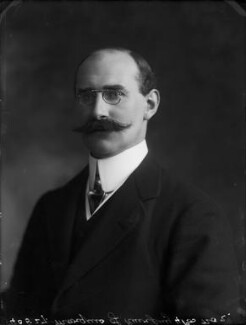Melville Henry Massue facts for kids
Quick facts for kids
Melville, "Marquis" of Ruvigny and Raineval
|
|
|---|---|

Massue in 1911
|
|
| Born | 25 April 1868 Fulham, Middlesex, England |
| Died | 6 October 1921 (aged 53) 46, St George's Road, Southwark, London, England |
| Noble family | de Massue de Ruvigny |
| Spouse(s) | Rose Amalia Gaminara |
| Issue |
|
| Father | Colonel C. H. T. B. de Massue de Ruvigny |
| Mother | Margaret Melville Moodie |
Melville Amadeus Henry Douglas Heddle de La Caillemotte de Massue de Ruvigné (born April 25, 1868 – died October 6, 1921) was a British historian and writer. He was especially interested in family histories and noble titles. He also led a group called the Legitimist Jacobite League of Great Britain and Ireland twice.
Contents
About Melville de Ruvigny
Melville de Ruvigny was born in London, England. His father was Colonel Charles Henry Theodore Bruce de Massue de Ruvigné. His mother was Margaret Melville Moodie from Scotland.
Melville de Ruvigny used the title "9th Marquis of Ruvigny and 15th of Raineval." He believed he was the rightful heir to this old French noble title. However, some experts on noble families disagreed. They said that after 1814, French titles could only be passed down through male family members. Melville de Ruvigny thought the original rules for the title still applied.
Family Life and Marriage
On August 30, 1893, Melville de Ruvigny married Rose Amalia Gaminara. She was from Tumaco, Colombia. Her mother was Doña Amalia Cabezas from Ecuador.
Supporting the Jacobites
Melville de Ruvigny was an early member of the Jacobite Order of the White Rose (1886–1915). Jacobites were people who supported the descendants of King James II as the rightful rulers of Britain.
In 1891, he helped start the Legitimist Jacobite League of Great Britain and Ireland. This group was more focused on politics. He was the president of the League in 1893, 1894, and 1897. This League was important in the Jacobite movement of the 1890s.
In 1898, he received an honor from Don Carlos, Duke of Madrid. Don Carlos was a Spanish royal claimant, sometimes called "King Carlos VII." Melville de Ruvigny was made a Knight of the Order of Charles III.
Later Life and Passing
Melville de Ruvigny was a very active writer. He wrote many books about family histories and noble families. He also joined the Roman Catholic Church in 1902.
He passed away in a nursing home in London. His second son, Charles, became his successor. His first son had died shortly before the First World War.
His Books and Writings
Melville de Ruvigny wrote many books. Here are some of his important works:
- Moutray of Seafield and Roscobie, now of Favour Royal, Co. Tyrone: an Historical and Genealogical memoir of the family in Scotland, England, Ireland and America
- The Family of Hicks (London: Privately Printed, 1902)
- The Plantagenet Roll of the Blood Royal, 5 vols. (London, 1903–1911)
- The Jacobite Peerage, Baronetage, Knightage and Grants of Honour (Edinburgh: T.C. & E.C. Jack, 1904)
- Morris of Ballybeggan and Castle Morris (s.l.: Privately Printed, 1904)
- The Moodie Book: Being an Account of the Families of Melsetter, Muir, Cocklaw, Blairhill, Bryanton, Gilchorn, Pitmuies, Arbekie, Masterton, etc., etc. (s.l.: Privately Printed, 1906)
- The Nobilities of Europe (London: Melville and Company, 1909)
- The Legitimist Kalender for the Year of our Lord 1910 (London: The Forget-Me-Not Royalist Club, 1910)
- The Titled Nobility of Europe: An International Peerage (London: Harrison & Sons, 1914)
- The Roll of Honour: a biographical record of all members of His Majesty's naval and military forces who have fallen in the war, 2 vols. (London: The Standard Art Book Co., Ltd., 1916)
Images for kids


